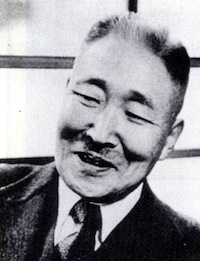Nakayama, Shinpei 1887 - 1952

Author: PTNA Piano Encyclopedia Editorial Department
Last updated:July 22, 2013
Author: PTNA Piano Encyclopedia Editorial Department
Born in Nagano Prefecture, he entered Tokyo Academy of Music (Tokyo Ongaku Gakko) and graduated from the piano department after working as an elementary school teacher. He studied composition under Nagayo Motoori. In 1914 (Taisho 3), "Katyusha no Uta" (Katyusha's Song), which he composed at the request of Hogetsu Shimamura for the Geijutsu-za (Art Theater) performance of "Resurrection," became a major hit. Subsequently, "Sasurai no Uta" (Wanderer's Song) and "Gondola no Uta" (Gondola Song) also became hits, making him instantly famous. From the late Taisho period to the early Showa period, he developed the children's song movement with Ujo Noguchi, becoming the most popular composer of children's songs. He produced numerous hits such as "Amefuri Otsukisan" (Rainy Moon), "Shabondama" (Soap Bubbles), "Shojoji no Tanuki Bayashi" (Shojoji Temple's Raccoon Dog Dance), "Ano Machi Kono Machi" (That Town, This Town), "Sendo Kouta" (Boatman's Song), "Defune no Minato" (Port of Departing Ships), "Habu no Minato" (Habu Port), and "Tokyo Ondo," also dominating the popular record song scene as a composer. His works number over 3,000 compositions.
